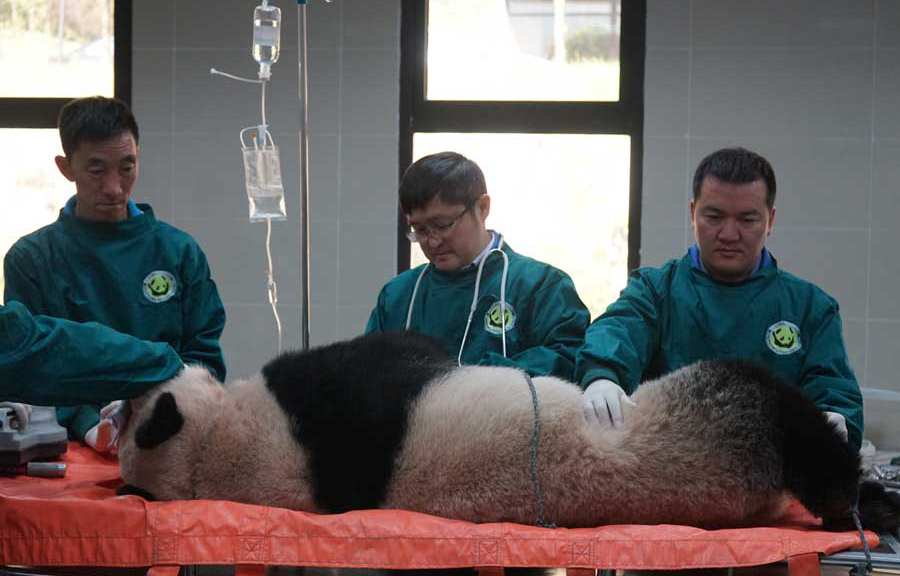导读:中国大熊猫保护研究中心于10月20日在四川雅安市的栗子坪自然保护区将两只雌性大熊猫“华妍”和“张梦”放归野外。这是我国首次同时放归两只雌性大熊猫。

With fewer than 2,000 of the animals living in the wild, and only 400 more in captivity, the giant panda is one of the world’s most vulnerable species.
由于生活在野外的大熊猫不足2,000只,圈养的也只有400多只,大熊猫是世界上最濒危的物种之一。
In order to increase the wild population of this rare bear, two captive-bred pandas will be released into the wild in China.
为了增加这种稀有熊猫的野生种群,两只圈养的大熊猫将在中国放归野外。
Three-year-old Hua Yan and two-year-old Zhang Meng are both female pandas. They have become the 6th and 7th giant pandas bred in captivity to be released into the wild.
三岁的华妍和两岁的张梦都是雌性大熊猫。她们已经是第6和第7只被放归野外的圈养大熊猫。
Huang Yan, chief engineer of the China Conservation and Research Centre for the Giant Panda, says the organization launched this rehabilitation scheme back in 2003.
中国大熊猫保护和研究中心总工程师黄炎说,该组织于2003年启动了这个放生项目。
"Although there are nearly two thousand pandas living in the wild, their habitats are fragmented into six different mountain ranges and the whole wild population is scattered into 33 small groups. Some small populations only have ten animals, which leads to a high risk of interbreeding and extinction. That’s the reason why we started this program."
“虽然有大约两千只大熊猫生活在野外,但是它们的栖息地分布在六个不同的山脉,全部的野生种群分为33个小群体。一些小群体只有十只动物,这导致了杂交和灭绝的高风险,这就是为什么我们开始这个项目。”
Huang says in order to be released to the wild, each panda has to go through various training, such as how to find food and avoid predators.
黄说,为了将它们放归野外,每只大熊猫必须经过各种训练,例如,如何觅食和避免捕食者。
The newly released pandas will live in Liziping Nature Reserve, located in Sichuan Province in the southwest of China.
新放归的大熊猫将住在位于中国西南部四川省的栗子坪自然保护区。
Wang Chengdong, another panda specialist at the center, helped to implant identification chips and GPS collars on the pandas.
该中心的另一位熊猫专家王承东帮助在大熊猫身上植入识别芯片和GPS项圈。
"By sending the pandas to the Liziping Nature Reserve, we increase mating alternatives and improve the genetic structure. Next, we will release more captive-born pandas to the wild in a bid to rescue the entire wild population. "
“通过将大熊猫送到丽子坪自然保护区,我们增加了大熊猫交配的选择,改善了它们的遗传结构。接下来,我们将把更多圈养的大熊猫放归野外,以拯救整个野生种群。”







